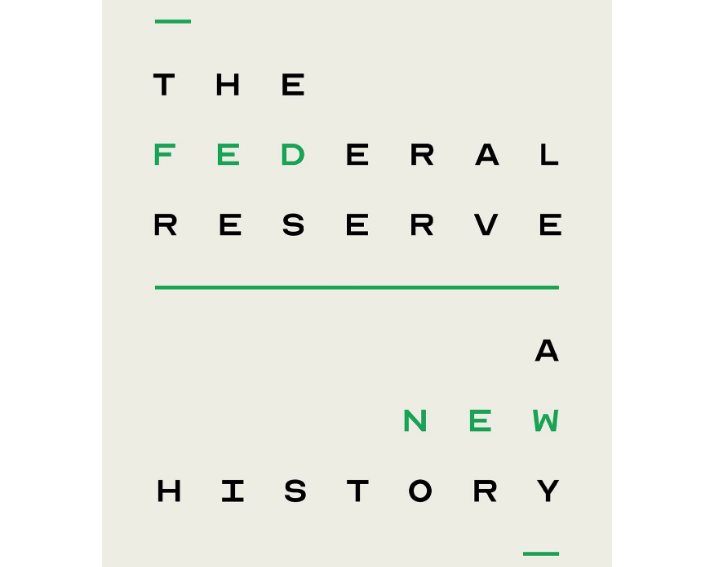Robert Hetzel has written an outstanding new book entitled The Federal Reserve: A New History. I reviewed the book for Central Banking. Here’s an excerpt:
During 2008, the Fed overreacted to (transitory) rising energy prices, and policy became too contractionary during the early stages of the Great Recession. Just as during the Great Depression of the 1930s, policymakers misdiagnosed the core problem as the financial system, whereas the actual problem was an overly tight monetary policy.
This incorrect diagnosis of the problem led to a number of interventions into the banking system, which failed to boost the economy in late 2008. Even worse, fear of inflation led the Fed to enact some misguided contractionary policies, such as its decision in October 2008 to sharply raise the interest rate paid on bank reserves. The goal was to prevent its liquidity injections from going out and stimulating the broader economy.
The economy only began to recover in 2009, when the Fed switched from banking rescue operations to monetary stimulus. The Covid crisis saw the Fed make the exact opposite error, an overly stimulative policy that relied on the now discredited 1960s idea of a trade-off between inflation and unemployment.
In 2020, not many economists correctly diagnosed the dovish policy errors being made by the Fed. Even fewer correctly spotted the overly hawkish policy during 2008. Robert Hetzel is one of a vanishingly small number of economists who were correct on both occasions. Perhaps it’s time we started paying more attention to his views.
Hetzel’s book should become the new standard for those who wish to understand how monetary policy has shaped the economy over the past 110 years. Read the whole thing.


READER COMMENTS
spencer
Jun 5 2023 at 7:20pm
re: “such as its decision in October 2008 to sharply raise the interest rate paid on bank reserves.”
When the Fed remunerated IBDDs, it wiped out all of the short-term wholesale non-bank funding.
As David A. Stockman, in his book, pg. 23: “The Great Deformation” put it: the Fed’s monetary transmission mechanism, interest rate manipulation, “fueled massively leveraged carry trades”. “Using CDS to avoid capital requirements”, transformed CDOs into “AAA rated blue-chip credits”. “The giant ultra-leveraged hedge funds” (investment banks) held assets “which were illiquid, longer-term, and subject to credit and market value risk”
“Due to this *credit* and *duration* mismatch, the profit spread per-dollar of assets was considerable, and when harvested a trillion times over, total profits were enormous”.
E.g., “ultra-cheap CP (commercial paper) funding also bore short maturities, meaning that GE Capital had to rollover billions of commercial paper debts day-in and day-out.”
…”these firms had become voracious consumers of “wholesale” money market funds, mainly short-term repo loans and unsecured commercial papers. From these sources, they had erected trillion-dollar financial towers of hot-money speculation.”
“on the eve of the financial crisis, Goldman had asset footings of $1.1 trillion and Morgan Stanley had also passed the trillion-dollar mark. Much of their massive wholesale funding, however, had maturities of less than thirty days, and some of that was as short as a week and even overnight.
When Bear Sterns hit the wall in March 2008, for example, it was actually rolling over $60 billion of funding every morning – until, suddenly, it couldn’t”
Thomas Hutcheson
Jun 5 2023 at 7:54pm
But did correctly identify the Fed failure to “do what it takes” to restore inflation and inflation expectations to target 2008-2020?
Scott Sumner
Jun 6 2023 at 2:31pm
Read the book and judge for yourself.
spencer
Jun 6 2023 at 11:06am
re: “the actual problem was an overly tight monetary policy.”
It was astonishing that Bernanke let N-gDp contract/decelerate for such a long period of time. Bernanke “did it again”.
https://www.federalreservehistory.org/essays/great-depression
Jon Murphy
Jun 6 2023 at 11:18am
Thank you for the recommendation. This Fall, I am teaching Money and Banking for the first time and I am approaching it as a combo macro theory/history of thought course. This book looks like it could be a good addition for some supplemental material.
spencer
Jun 6 2023 at 11:29am
Bernanke let the rate-of-change in N-gDp contract from Greenspan’s 8.5% in the 1st qtr. of 2006 (when Bernanke took over), to -7.6 in the 4th qtr. of 2008. That was a huge monetary policy blunder.
spencer
Jun 6 2023 at 3:30pm
George Selgin correctly identified the cause of the GFC’s extended timeline:
The Romulan cloaking device (payment of interest on interbank demand deposits, on a “Master Account” identified by a Primary nine-digit Routing Transit Number, RTN), vastly exceeded the level of short-term interest rates which was explicitly illegal per the FSRRA of 2006.
Link:
“The 2006 Financial Services Regulatory Relief Act gives the Fed permission to pay interest on reserves. The IOR rate was always higher than “the general level of short-term interest rates” which is imposed in the Law. “A Legal Barrier to Higher Interest Rates,” The Wall Street Journal, Sept. 28, p. A13.
Comments are closed.